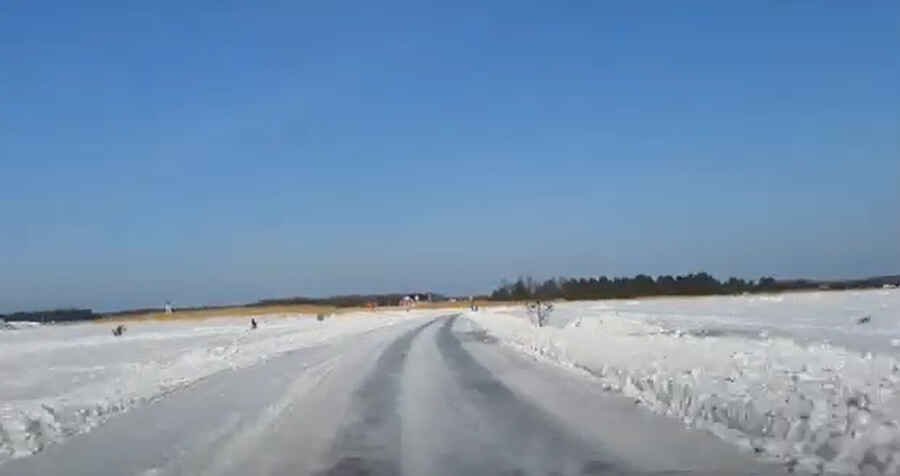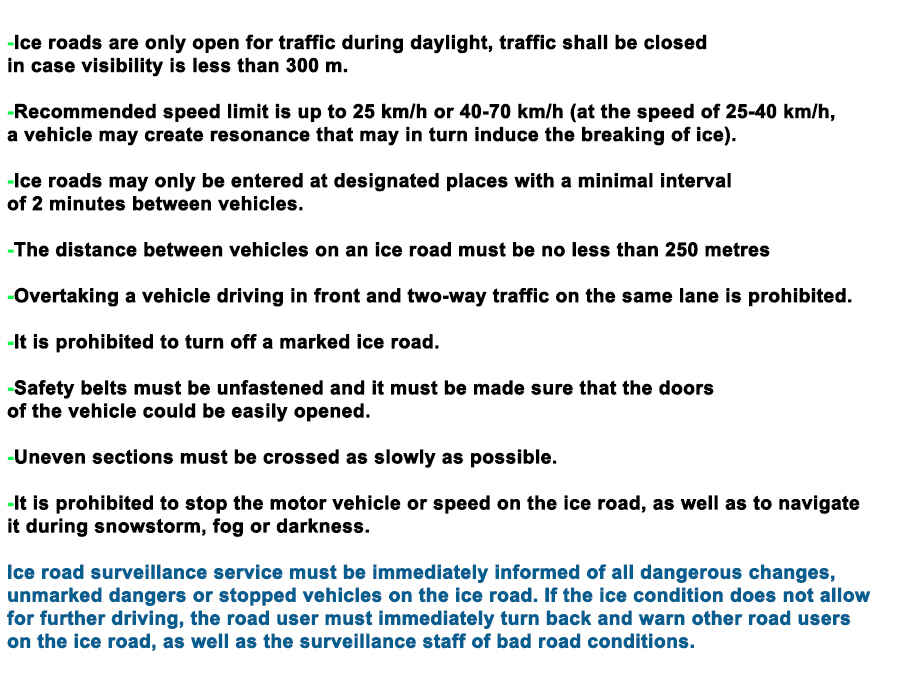Driving Estonia’s Ice Roads
Situated on the northeastern part of Europe, Estonia is a low, flat country located on the eastern shores of the Baltic Sea. It is the northernmost of the three Baltic states.

The country has more than 80 km of ice roads, human-made structures running on a frozen water surface. The country has a network of officially recognized ice roads. When the winter gets cold enough to create thick ice, all the official ice roads in Estonia can be opened. Driving on an ice road in Estonia is not for the faint of heart. Strict rules must be followed, and weather conditions must be ideal. The ice must be at least 20 cm thick to hold the weight of a car. The recommended speed is 25 km/h or 40-70 km/h. All the roads are open during daylight hours, usually 10am to 5pm, to avoid accidents occurring during hours of darkness. Unofficial ice roads are extremely hazardous and there are accidents every year. Seatbelts are forbidden as drivers may need to quickly exit their car. Before entering an ice road, save the telephone number of the surveillance staff exhibited on the board at the entry point of the ice road in order to call for help if necessary. And remember, do not enter ice roads that have not yet been opened, it is extremely dangerous!
Traffic rules on Estonia’s Ice Roads:

Ice road lengths:
| Ice Road | Location | Length |
| Virtsu – Kuivastu | Between the mainland and Muhu | 6.5km |
| Rohuküla – Heltermaa | Between the mainland and Hiiumaa | 26.5km |
| Rohuküla – Sviby | Between the mainland and Vormsi | 10.2km |
| Tärkma – Triigi | Between Hiiumaa and Saaremaa | 16.7km |
| Haapsalu – Noarootsi | 3.2km | |
| Lao – Kihnu | Between the mainland and Kihnu | 13.0km |